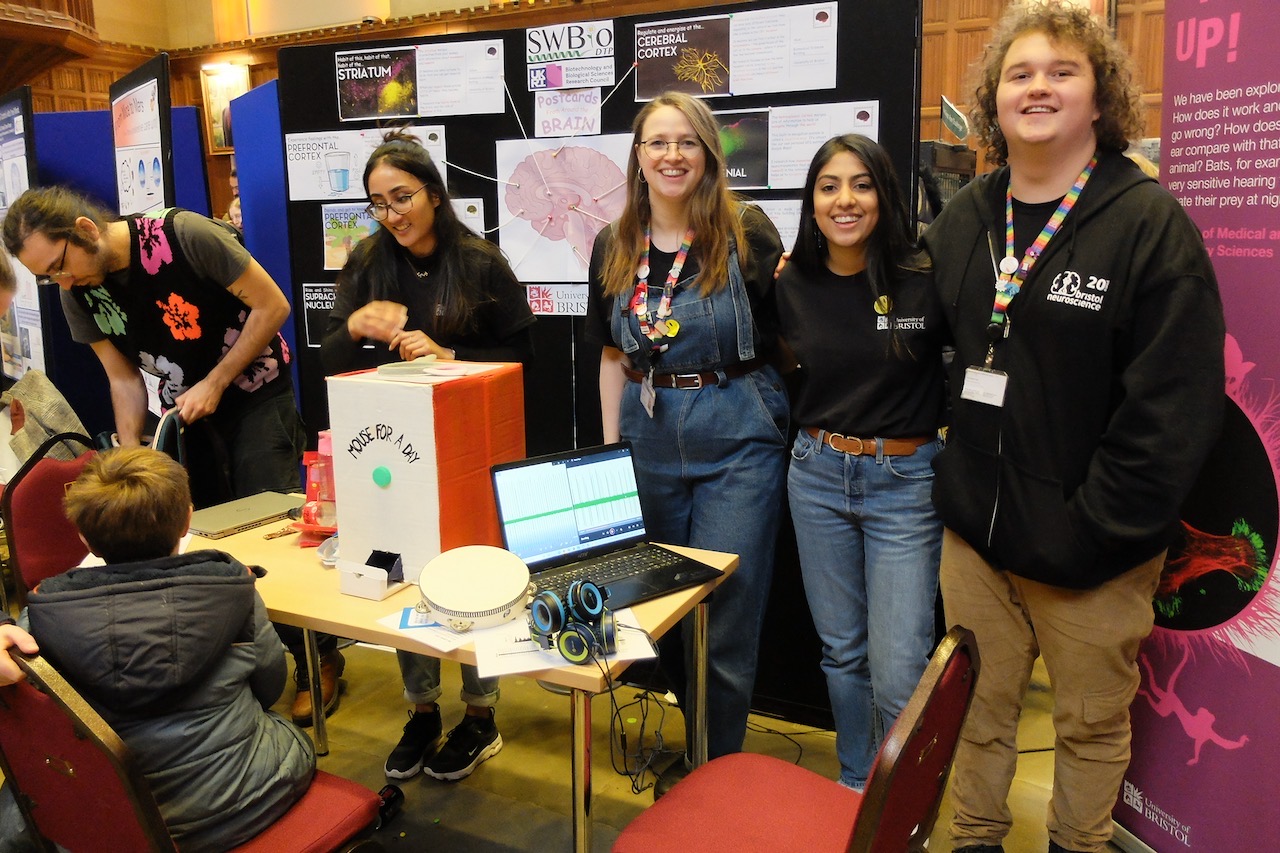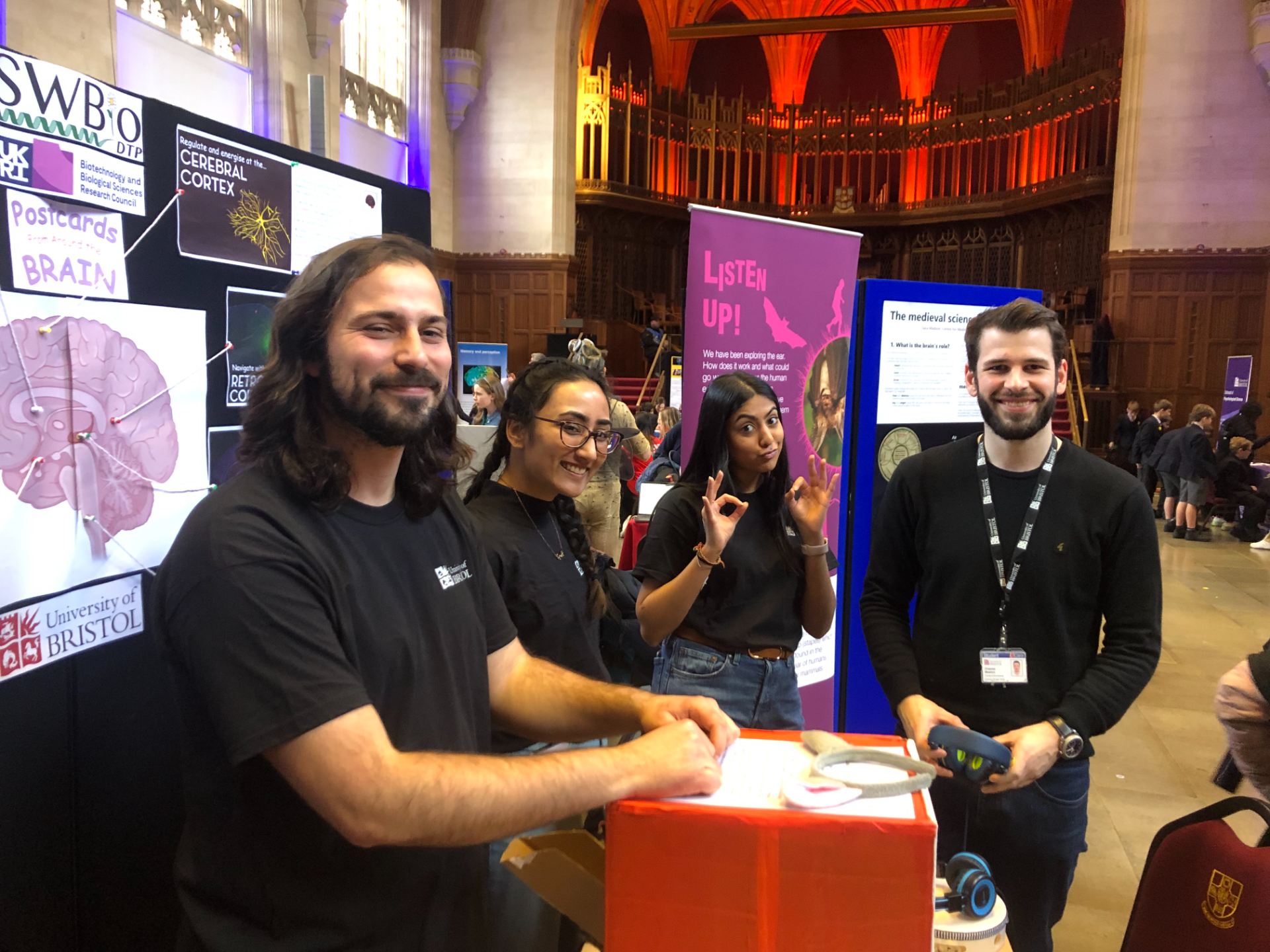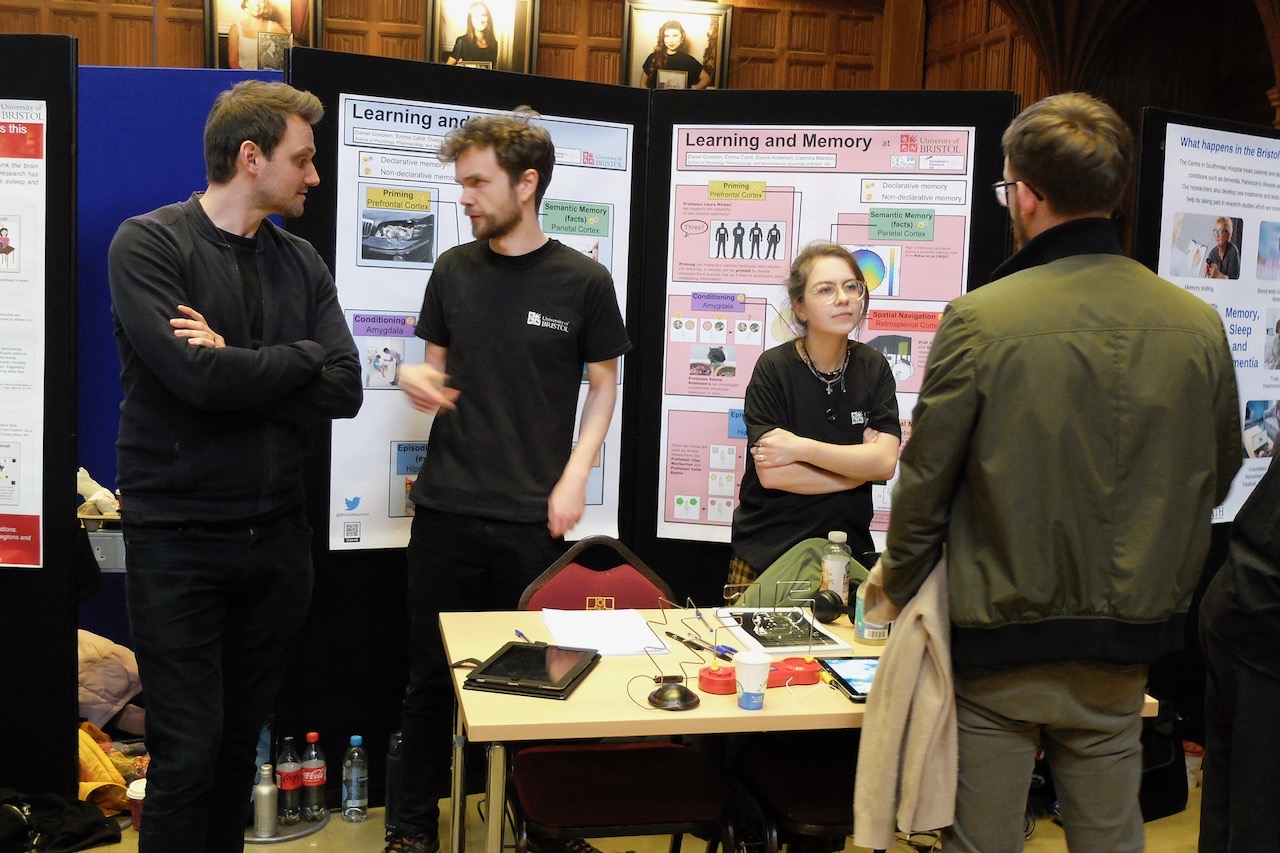The Bristol Neuroscience Festival is the biggest public engagement event in Bristol Neuroscience’s calendar, welcoming the public – including dozens of school trips – to stalls showcasing research from across the synaptic spectrum, from educational psychology through to cellular biochemistry.
This year, headed by the Animal Behaviour and In Vivo Studies research theme champion Prof Emma Robinson, the festival celebrated its 10-year anniversary and long anticipated post-COVID return. Emma, supported by second-year student Callum Young, helped to organise an incredibly successful event attended by thousands of members of the public. Festival-goers engaged with hands-on activities, participated in experiments, and spoke to real neuroscientists from the University of Bristol and beyond.

As part of the festival, SWBio ran their own stall which showcased the students’ research. ‘Postcards From Around the Brain’ illustrated the diversity of research within the DTP, including three interactive games focused on reward, motivation and optimism:
Game 1: Be a Brain Cell. Visitors to the stall would listen to real in-vivo recordings of dopamine neurons. One of the students would then explain what these recordings meant and how they were used to convey signals about reward and learning. Whilst listening, the participants would use tambourines to recreate the sound. This helped them to understand the different signals that brain cells can generate and provided an easy analogy to aid with understanding.
Game 2: Mouse for a Day. Visitors would stand before a cardboard box and invariably ask ‘what do you mean?’: the perfect place from which to explain our nose-poke task. In this game, they would don a pair of mouse ears (essential for the experiment!) and press a button with their nose. They would be given sweets as a reward, according to hidden rules based on real reinforcement schedules. We use this very simple task to demonstrate motivation and how it can be studied in animals. By explaining how these experiments can reveal a lot about animal behaviour, we can also use the public’s own performance to explain theirs.
Game 3: The Optimism Test. Derived from an experiment conducted by our very own students, this computer game used a basic psychological premise to explore participants’ ‘optimism’. This allowed visitors to get a glimpse into how we do research in humans and also gave them an understanding of how we measure optimism / pessimism as a tool to understand mental health. They would get an ‘optimism’ score, which would then inspire competition between friends.

As well as the DTP stall, SWBio students took part in other activities. Of note, Dasha Anderson and Dan Goodwin were key players on the memory stall, and Naomi Berthaut on the neurodevelopment stall. These included virtual reality games, a ‘great ape challenge’, and various optical illusions. In her role as the University of Bristol’s student representative for the British Neuroscience Association (BNA), Molly Davidson also helped run the BNA stand where members of the public could try out being a neuroscientist and get advice on careers in neuroscience. Additionally, Grace Ryall and Joe Flanagan helped run the ‘Backyard Brains’ activities, which featured a dancing cockroach leg!

The SWBio stall itself, led by Callum, featured work from Charlotte Muir, Tanya Kaur, Amy Amin, Nick Cherbanich, Alexandre Pinto, Carolina Gauzenzi, and Molly Davidson. Each contributed extensively to the stall and did a great job at highlighting the amazing neuroscience research from the DTP.
